What Are Accessory Dwelling Units and Does Connecticut Allow Them?
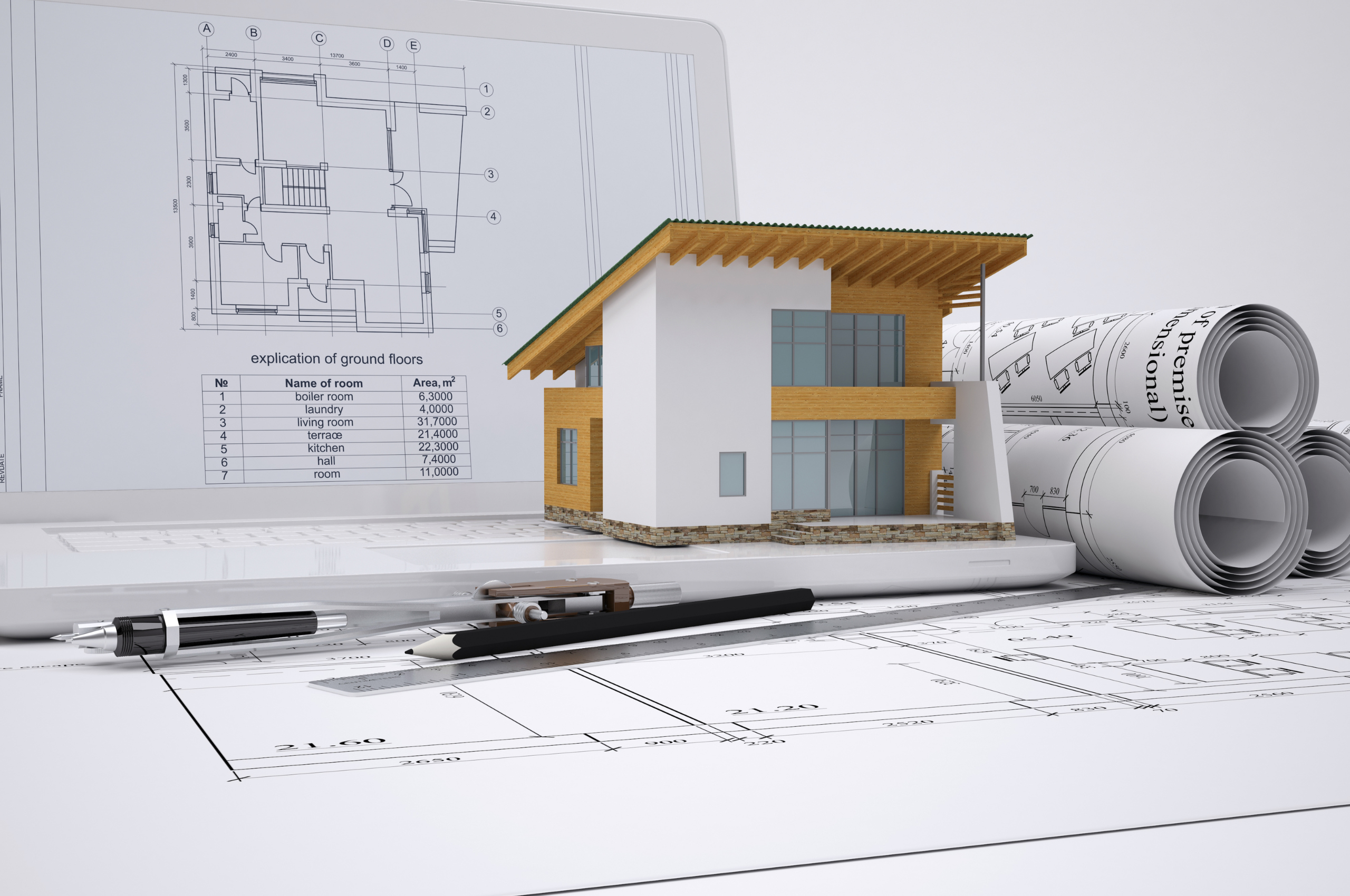 Families come in a variety of shapes and sizes. More younger family members are living at home for longer. Older family members are also beginning to move in with younger members to be taken care of or to help with childcare. Regardless of what your family looks like, it's important to have space for them in your home. Accessory dwelling units (ADU) are one way to add space to a single-family home. When considering adding on an ADU or rental property, there are a lot of things to think about. What exactly are ADUs, what benefits will it have on your home, and what are the laws about them in Connecticut?
Families come in a variety of shapes and sizes. More younger family members are living at home for longer. Older family members are also beginning to move in with younger members to be taken care of or to help with childcare. Regardless of what your family looks like, it's important to have space for them in your home. Accessory dwelling units (ADU) are one way to add space to a single-family home. When considering adding on an ADU or rental property, there are a lot of things to think about. What exactly are ADUs, what benefits will it have on your home, and what are the laws about them in Connecticut?
What are Accessory Dwelling Units?
ADUs go by many names. Mother-in-law suites, backyard cottages, accessory apartments, and granny pods are just a few.
At their heart, ADUs are a second, smaller house or apartment that is either attached to or detached from the primary residence. For example, often people have an ADU in their basement or backyard. The size and location of ADUs on a property are typically determined by that municipality’s zoning regulations.
There will be a kitchen, bedroom, bathroom, and living room area. Each dwelling can be made to cater to a specific person or family size.
Building ADUs can vary in cost depending on where you build it and how big you build it. Creating one in your existing house, like the basement, can be cheaper because you don't have to deal with adding walls, foundation, or plumbing. If you build one detached from your home , you do have to pay for new plumbing and electrical hook ups, it can be more customizable but at a more costly rate.
Benefits for Single Family Homes
 If you have a single-family home, it can be hard to house extra family members or children who need to live at home longer but want their own space. One of the biggest benefits to owning an ADU is that you create space for family members who need it.
Depending on the location of the dwelling, you can also rent it out to make extra income. ADUs can increase the value of your property by 20%-30%. It can also appeal to more buyers when you go to sell your home.
These dwellings can also help reduce gentrification and desegregate neighborhoods by giving opportunities to people who otherwise might not be able to afford to live in certain neighborhoods.
If you have a single-family home, it can be hard to house extra family members or children who need to live at home longer but want their own space. One of the biggest benefits to owning an ADU is that you create space for family members who need it.
Depending on the location of the dwelling, you can also rent it out to make extra income. ADUs can increase the value of your property by 20%-30%. It can also appeal to more buyers when you go to sell your home.
These dwellings can also help reduce gentrification and desegregate neighborhoods by giving opportunities to people who otherwise might not be able to afford to live in certain neighborhoods.
Accessory Dwelling Unit Laws in Connecticut
The laws around accessory dwellings in Connecticut changed in 2021. The legislation, Public Act 21-29, requires towns to designate specific zones where ADUs are permitted as-of-right, either attached to or detached from the single-family house.
However, towns can opt out and set their own requirements for ADUs or not allow them at all. One exception to this is that towns cannot require a minimum square footage. Checking local requirements before building will ensure you aren't breaking any laws.
ADU Laws in Norwalk, Connecticut
In Norwalk, CT ADU regulations were adopted in 1982, with updates adopted by the Planning & Zoning Commission at their December 8, 2022 meeting. There are currently 259 accessory apartments in the city. After reviewing the new state laws, Norwalk agreed with the majority of the new state law. In fact, many of Norwalk’s current ADU regulations already comply with the law, including:
- Permitted in all zones where the primary use of a property is a single-family residence
- ADUs allowed to be attached to or within a single-family residence
- Setbacks and building frontage must be less than or equal to that required for single family residences
- No more than one parking space for an ADU
- A familial, marital or employment relationship between accessory apartment
- occupant and single family residences owner is not required
- Separately billed utilities is not required
The one area of concern for Norwalk was the allowed height of a detached ADU, which the new state law requires to be the same as what is allowed for single-family houses. In Norwalk, the maximum allowable height for a detached ADU varies between 15’-20’, depending on the location of the detached ADU.
Additionally, the Norwalk Planning and Zoning Commission updated the design and landscape standards for ADUs, stating, “For detached accessory dwelling units, a buffer, consisting of fencing and/or vegetative screening that includes a mix of evergreen and deciduous trees as well as foundation plantings, shall be required between the accessory dwelling unit and the nearest side and rear property lines. The final determination on the location of the screening and the required materials shall be determined by the Zoning Enforcement Officer, based on the proposed location of the detached accessory dwelling unit and its proximity to the neighboring properties.”
Prohibited Structures
In Norwalk, the following structures are prohibited and shall not be used as an accessory dwelling unit:
- Mobile homes
- Recreational vehicles
- Travel trailers
- Shipping containers
- Storage containers
- Any other wheeled or transportable structures
Procedure for Approval
A certificate in the form of an affidavit which verifies that the owner continues to reside on the premises, the minimum rental duration and all other conditions met at the time of the original application remain unchanged, shall be submitted to the Zoning Enforcement Officer by January 31 of each year. Applications for attached accessory dwelling units shall be permitted subject to approval by the Zoning Enforcement Officer, and applications for detached accessory dwelling units shall be permitted by the Planning and Zoning Commission, subject to Section 118-1451 with a site plan review.
Both forms of approval are considered as-of-right which comply with the standards established by Public Act 21-29. Norwalk's New Business Development Center
Norwalk is recognized by families and businesses as one of the best places to live. Its population now exceeds 92,000 residents and it is the 6th largest city in Connecticut. It comes as no surprise that there is a lot of economic opportunity in Norwalk, and new businesses are starting up on a very regular basis. To aid Norwalk-based entrepreneurs and new business owners, the city has created a new Business Development Center. Read on to learn about this brand new facility and the services provided.
What is the Business Development Center?
[caption id="attachment_2140" align="alignleft" width="1024"]
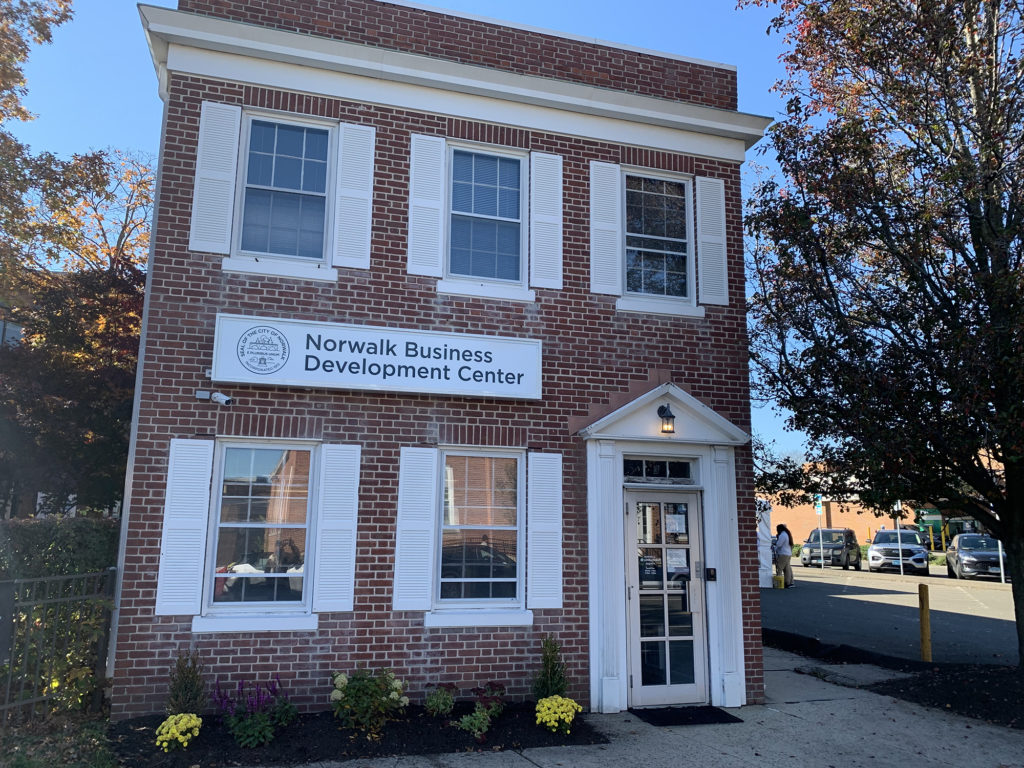
Photo courtesy of Nancy Chapman[/caption]
The new business center, located at 3 Belden Avenue, was opened on November 3, 2022. It’s designed to be an all-inclusive resource that entrepreneurs and business owners can utilize throughout the life cycle of their businesses. This center was constructed using various sources of federal, state, and local funding. The American Rescue Plan Act gave the development center a vital infusion of funding to help complete it.
"We have the opportunity to have staff onsite to be able to assist with local and state grants, be able to build business plans, business models, offer professional development training, and be able to offer residents…and people in the region, as a whole, an opportunity to be able to take a dream that they may have stored for a very long time and actually make it a reality,” says Jessica Vonashek, Chief of Economic and Community Development for the City of Norwalk.
What Services does the Business Development Center Provide?
 Whether you are looking at starting a business or expanding one, the development center can help you. Services are extensive and cover a variety of topics:
Whether you are looking at starting a business or expanding one, the development center can help you. Services are extensive and cover a variety of topics:
- Financial Education
- Loan or Grant Application Assistance
- Technical Support for Local, State, or Federal Permitting
- Business Plan Development and Implementation
- Local and State Licensing Requirements
- Insurance for Your Business
- Market Research
Financing is another popular topic among entrepreneurs. Prospective business owners want to know how to infuse capital into their companies. The Business Development Center resources can walk you through traditional lending options, local programs, and Small Business Administration (SBA) programs.
All of these resources are available free of charge to ensure these resources are accessible to everyone.
The Business Development Center is a partnership with the City of Norwalk, the Greater Norwalk Hispanic Chamber of Commerce, The Greater Norwalk Chamber of Commerce, SCORE, the Small Business Development Council, the Norwalk Redevelopment Agency, the Women’s Business Development Council, and the NAACP. This partnership ensures that there is support for your business that is diverse and equitable.
Have More Questions?
With the help of private sector experts and higher-education resources, you can make your dream of starting your new business in Norwalk, CT a reality. If you want to learn more about Norwalk’s Business Development Center, contact us today or come visit us at the Norwalk Business Development Center Monday through Friday from 9 am to 4 pm. Recommendations for Norwalk's Industrial Waterfront
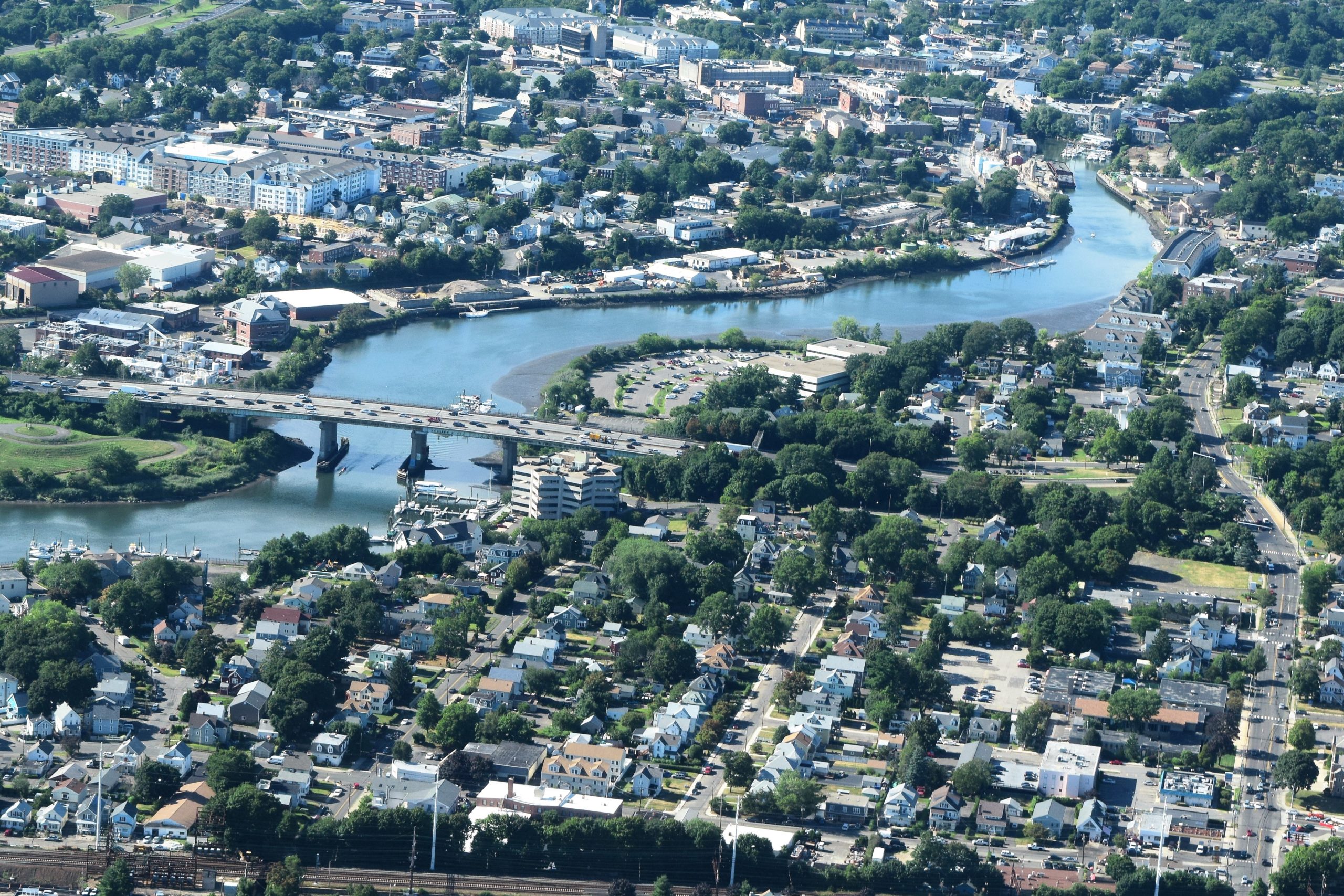 A significant portion of the waterfront in Norwalk, CT has been zoned and used for industrial use. The city undertook a planning exercise to determine the appropriate land uses for these historically industrial waterfronts. The draft plan, Industrial Waterfront Land Use Plan, has been developed for the city to use as a policy roadmap, allowing these areas to grow and change in a way that balances and aligns with both public and private needs.
A significant portion of the waterfront in Norwalk, CT has been zoned and used for industrial use. The city undertook a planning exercise to determine the appropriate land uses for these historically industrial waterfronts. The draft plan, Industrial Waterfront Land Use Plan, has been developed for the city to use as a policy roadmap, allowing these areas to grow and change in a way that balances and aligns with both public and private needs.
Changes to the zoning laws around the Norwalk waterfront will be aimed at promoting economic development and preserving the water dependent uses in the area, while also increasing public access, improving water quality through improved drainage techniques and providing native vegetative buffers, while also improving the built environment.
Read more to find out some of these suggestions for how to revise this waterfront.
Why the Norwalk, CT Waterfront Rezoning Matters
Before we begin, let’s take a quick look at why the Norwalk waterfront needed to be reevaluated.
It’s quite an understatement to say that industrial waterfront land has vastly changed in the last century. In Norwalk, the use of industrial waterfront has been transitioning from strictly industrial uses to less intense uses, such as marinas and small boat facilities, while legacy uses such as oyster harvesting and bulkhead repairs continue to be integral parts of the community. In addition, modern innovations, like the innovative boat building and storage or marine highway programs like harbor harvest hold promise for future economic success for our harbor.
However, updating industrial waterfronts comes with its challenges. The historical use of Norwalk's urban waterfront plays such an enormous part in the city's identity. It's also an essential piece of the local economy.
The Norwalk waterfront has an array of uses.Some areas are zoned exclusively for heavy industrial uses, while others are reserved for commercial or public use and some have a mix of uses which can include residential
This is why the Norwalk Industrial Waterfront Land Use planning process looked at ways to benefit both public and private institutions alike, including the input of many stakeholders to thoughtfully address these uses. Read further to learn about the major themes that occurred throughout the planning process.
1. Increased Public Access
One common desire mentioned in the numerous meetings with the public is for Norwalk residents and tourists to have more access to the waterfront. An asphalt factory near the head of the Norwalk river is a good example. Not only is The facility under-utilized, but locating an asphalt plant in proximity to your downtown is not a desired land-use scenario. In addition, the public feels the land could better serve the community by broadening its usage.
This automatically indicates the need for changing the zoning laws, which is already underway. This site would need to be rezoned from its current industrial status. It's just one example of how shifting the zoning laws may impact the broader waterfront ecology.
2. Reduced Heavy Industry
Rezoning to determine the appropriate types of heavy industrial usage and where they should be located have been common themes across every public meeting. The current zoning laws prioritize heavy industry. The updated zoning regulations would increase light industrial and artisanal industries.
These would be able to exist alongside residential zones to buffer more heavy industrial uses. This would allow for more mixed-use areas near the waterfront.
3. Mixed Use
Whatever form the final rezoning takes, mixed-use could play an important part. We see this in the proposal of placing light industry next to residential, for instance.
This would open the way for mixed-use marine commercial zoning, allowing more marine commercial businesses to remain on the waterfront while opening up the area around them for mixed uses. Examples of marine commercial businesses could include yacht clubs or marinas while mixed uses could be a marine retail store with residential above.
4. Reimagining Water Street
How Water Street looks, feels and functions has been debated many times over the years. The Plan’s vision for the area strives to strike a balance between the desire for public access and views of the water, with the need to support Norwalk’s thriving marine industries, while also improving the built environment of the street to compliment the desired development occurring elsewhere in the neighborhood.
Increasing the amount of greenery, particularly waterfront buffers, is another common concern, which would also help to address environmental issues. This is another major goal for many of the proposed changes to the industrial waterfront.
These suggestions will all help to keep the area vital, making it more appealing to residents and visitors.
5. Retain Protect, and Reinvest in Water-Dependent Businesses
There was consensus among stakeholders of the need to support and maybe even expand businesses that are water dependent in Norwalk, especially in the Water Street Marina area in South Norwalk. The concern is that they continue to contribute to Norwalk and the regional economy.
Ways to do this include: increasing the protected marine commercial zone and investing in infrastructure for these industries– such as bulkheads, dock repairs, and dredging of the Norwalk River.
While this is an acknowledged goal of the plan, it must be done in a way that considers the other identified needs and goals of the study, so the waterfront is resilient, active and accessible to all.
6. Preserve the Environment and Prepare for Resiliency
For waterfront areas, consideration of environmental factors is especially important. Recommendations for all the waterfront parcels is to increase flood resilience, improve water quality, and promote ecological restoration.
Investing in things like impermeable to permeable pavement or vegetation/soft shoreline would help reduce flooding in the more urban areas of the waterfront. These would limit property damage and ensure businesses are able to resume operations soon after a major storm. Expansion of tidal marshes, living shoreline, vegetative buffers, or other passive flood protection would help to mitigate flooding, improve water quality, and restore habitat in less inhabited areas.
The final recommendations in the plan, like those above, will inform the city as they work to update policy and develop the waterfront along Norwalk Harbor and the Norwalk River, including the Harbor Management Plan as well as land use regulations.
Stay up-to-date on the Norwalk, CT waterfront and other planning efforts of the City and give us your input.
Preserving Norwalk’s Trees: Norwalk, CT's Street Canopy Project
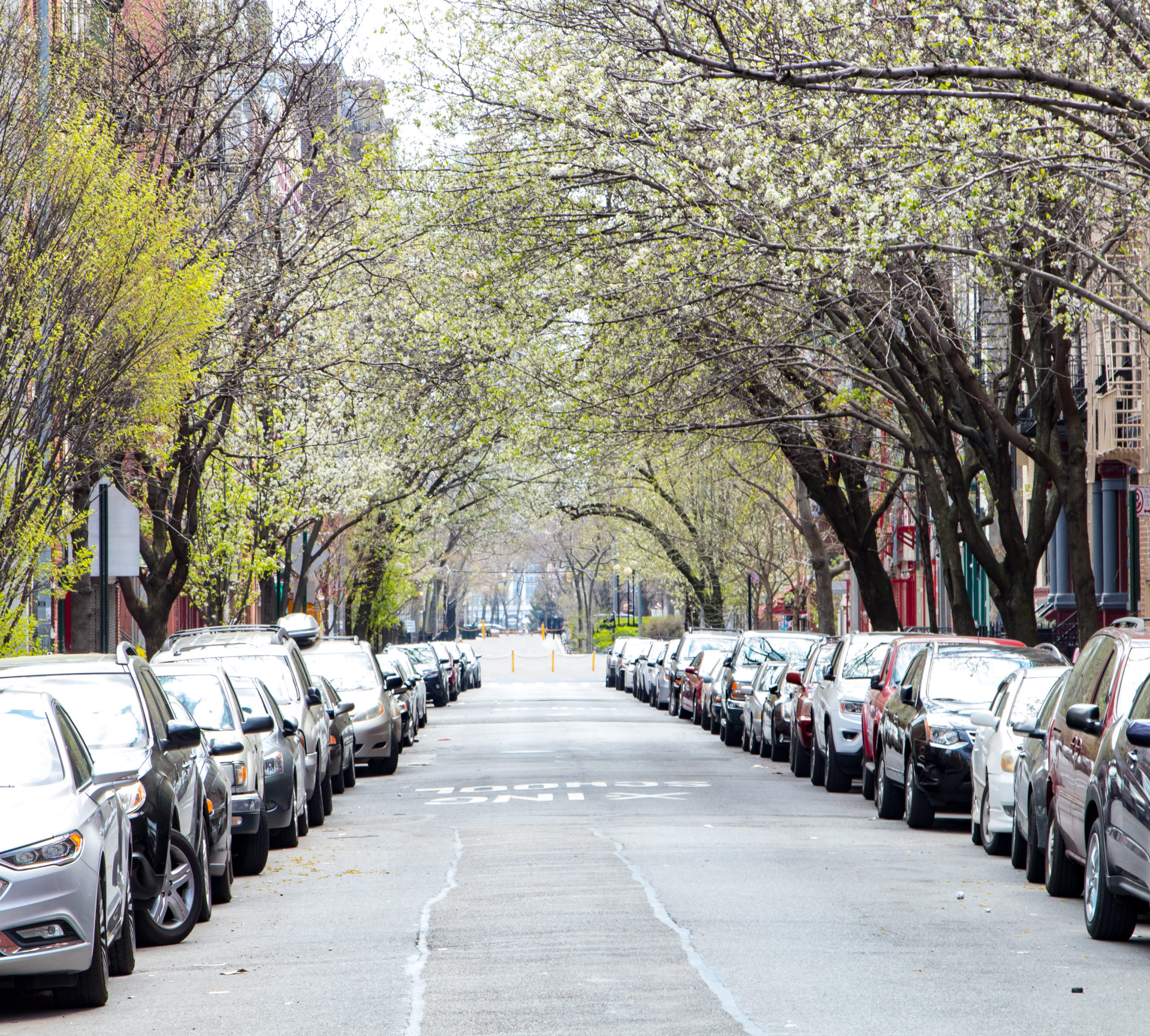 Trees provide habitats and improve the air we breathe. They help mitigate storm water, give us shade and project a sense of calmness in the world. Trees beautify both suburban and urban areas and can help reduce the heat island effect.
Many states and cities are looking at ways to protect their trees by coming up with a more enlightened approach to preserving current trees and planting new ones. The question is, how can cities continue to develop and maintain the tree cover in the process?
In Norwalk’s Citywide Plan, the City is tasked with protecting the natural environment. This entails not only protecting the open spaces and parks, but also its urban forestry by balancing growth and preservation. Allocating roadside space to street trees and landscaping helps improve the aesthetics of the streetscape, provides a buffer between the roadway and sidewalk to improve pedestrian comfort, and can facilitate stormwater management through bioretention features such as planters and swales.
Below we take a look at how Norwalk, CT is working to enhance its tree canopy with a tree ordinance and other actions.
Trees provide habitats and improve the air we breathe. They help mitigate storm water, give us shade and project a sense of calmness in the world. Trees beautify both suburban and urban areas and can help reduce the heat island effect.
Many states and cities are looking at ways to protect their trees by coming up with a more enlightened approach to preserving current trees and planting new ones. The question is, how can cities continue to develop and maintain the tree cover in the process?
In Norwalk’s Citywide Plan, the City is tasked with protecting the natural environment. This entails not only protecting the open spaces and parks, but also its urban forestry by balancing growth and preservation. Allocating roadside space to street trees and landscaping helps improve the aesthetics of the streetscape, provides a buffer between the roadway and sidewalk to improve pedestrian comfort, and can facilitate stormwater management through bioretention features such as planters and swales.
Below we take a look at how Norwalk, CT is working to enhance its tree canopy with a tree ordinance and other actions.
Norwalk's History of Tree Planting
Keeping Norwalk a tree-laden city has long been important to Norwalk. The city has had a tree planting program and a tree management plan in place for over 18 years. Key to this plan is working with liaisons from neighborhood associations. The liaisons keep an eye on all things tree-related in their area and suggest tree plantings in an effort to increase the number of trees in the city.
This approach ensures that the public has oversight and input into keeping a tree canopy alive and vital in their neighborhoods. Since 2004, about 1,200 trees have been planted in the city.
Norwalk Tree Ordinance
In Norwalk, like most cities, the more urban neighborhoods have fewer trees. Consequently, low-income neighborhoods have less tree canopy coverage, resulting in health and environmental problems such as high asthma rates.
To protect the City’s existing trees, and increase Norwalk's tree canopy equitably, the Common Council approved an updated Tree Ordinance in 2021. It gave the city's tree warden expanded powers and established a legacy tree program.
The tree warden is tasked with assessing or overseeing the evaluation of the city's tree canopy. This evaluation helps determine whether or not a tree may be removed or altered when it’s on public property. To do so, requires a permit from the warden. The warden may also require a tree or shrub be replaced.
The warden keeps a record of the city's existing trees, creating a catalog of the important legacy trees according to their size, age, and species.
The ordinance requires developers to protect a tree’s root zone during construction. The developer will also pay a bond before any work begins. Fines and penalties aim to discourage the unnecessary removal of trees.
Another important change brought about by the Tree Ordinance is the establishment of a Norwalk Tree Account. This account helps fund tree planting with the use of tree-related fines and fees, and other payments as well as public and private grants. Since its establishment, grants to this account have increased, allowing the City to expand its tree planting. For example, since the Tree Ordinance was passed, tree plantings increased from 56 in the fall of 2020 to 171 in the spring of 2022.
The Tree Advisory Committee
In the 2021 Tree Ordinance, the duties of the Tree Advisory Committee expanded. The Committee works closely with the tree warden to recommend the types of trees to plant. They also encourage Norwalk residents to volunteer to help plant trees as part of the ongoing tree planting program.
The Committee will oversee the creation of a Master Tree Plan which will include any studies made by the tree warden. The plan will assess Norwalk’s current tree canopy along with the relevant environmental, social and public health benefits, and develop strategies and actions to increase tree cover with primarily native and hybrid species of trees.
Norwalk, CT's Environmental Projects
Concerns about environmental protection in Norwalk have led to the commitment to protect and increase Norwalk's tree canopy including urban trees throughout the city.
The city is also undertaking a heat sensor study to track temperatures in various parts of the city to identify areas that may be vulnerable to extreme heat events. The results from this study will help inform tree planting and illustrate the benefits of a tree canopy.
In addition, Norwalk is in the process of adopting Complete Streets legislation and design manual. These will provide guidance for designing and reconstructing our streets with the principles of safety, sustainability, and vitality. This comprehensive and cross-functional approach to maintaining and designing the public right of way will take into consideration new tree installations.
Environmental projects like the Norwalk Tree Plan and Tree Ordinance recognize that trees are an integral part of a healthy ecosystem, sequestering carbon, reducing stormwater, and improving the health and well being of residents.Resilient South Norwalk Project Looks to Combat Climate Change
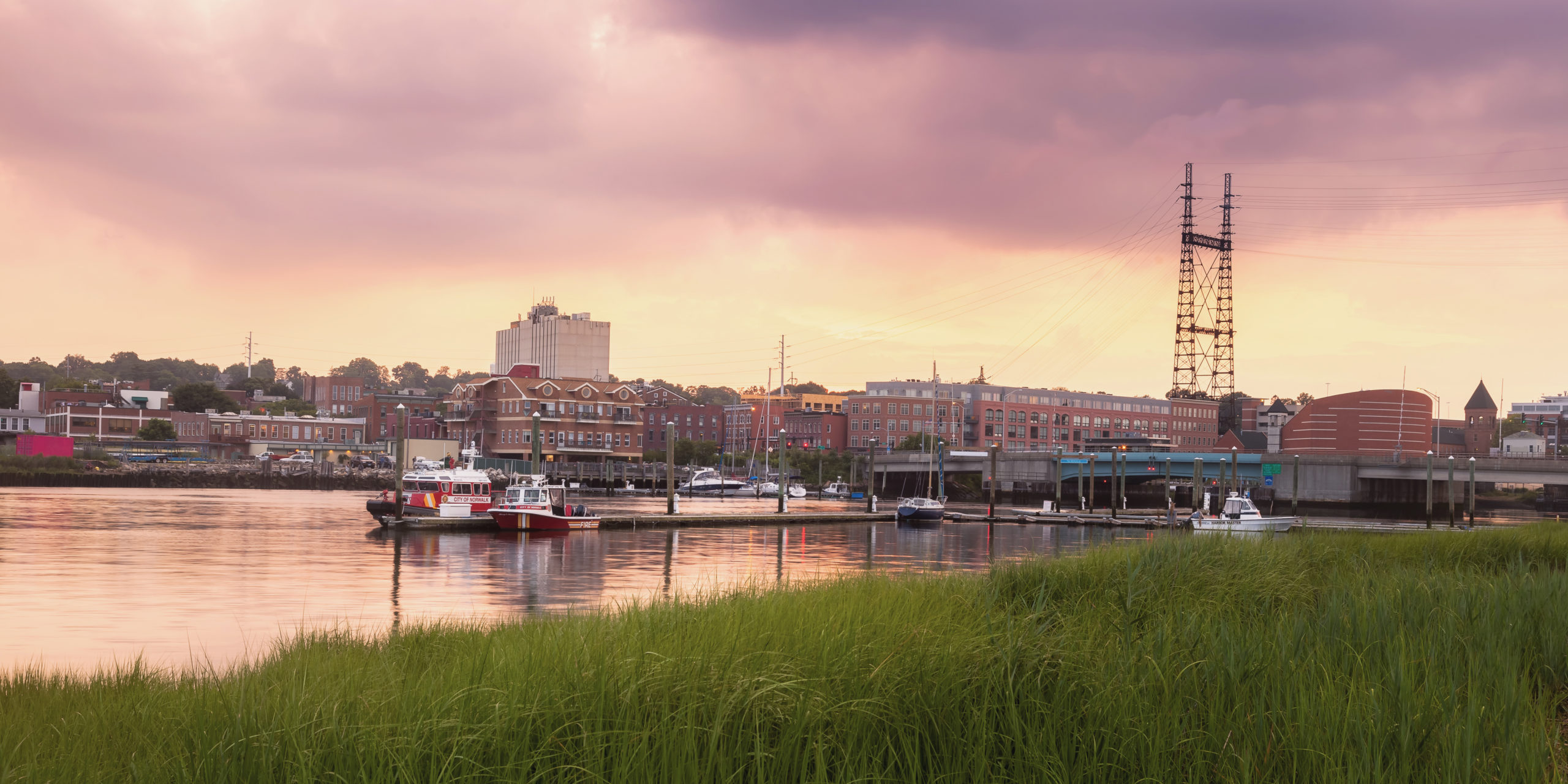 Over the past few decades, South Norwalk has developed into one of the trendiest neighborhoods in Connecticut. It has excellent restaurants and shopping options and boasts a protected historic district and numerous tourist attractions. However, like much of Connecticut, it is vulnerable to the effects of climate change.
Over the past few decades, South Norwalk has developed into one of the trendiest neighborhoods in Connecticut. It has excellent restaurants and shopping options and boasts a protected historic district and numerous tourist attractions. However, like much of Connecticut, it is vulnerable to the effects of climate change.
In the years to come, researchers expect more extreme weather conditions that can potentially change our experiences within our cities. There is a global drive for cities to innovate and adapt to the effects of climate changes like hotter days, wildfires,more intense storms and flooding.
Norwalk, CT is trying to find ways to adapt to the new realities of a changing climate.
As part of the Resilient Connecticut Initiative by the Connecticut Institute For Resilience & Climate Adaptation (CIRCA), the City is studying heat, flooding and other indicators of climate change in the city so it can begin climate resilience planning. One part of this effort is placing heat sensors around Norwalk to monitor changes in temperature. Another study in the works is the Resilient South Norwalk Project.
Keep reading to learn more about this project.
Why Is South Norwalk at Risk?
The location of South Norwalk along the coast of Long Island Sound and the Norwalk River makes this neighborhood vulnerable to flooding. In 2012, superstorm Sandy showed the dangers of a storm surge in the community.
Connecticut is already experiencing warmer temperatures and higher levels of rain. Rising sea levels and more frequent storms due to climate change are a major risk for South Norwalk.
Another significant challenge is extreme heat. Urban areas are often hotter than a natural landscape. High social vulnerability in parts of South Norwalk will worsen the effects of extreme heat.
What Is the Resilient South Norwalk Project?
The Resilient South Norwalk Project will analyze potential problems the community faces and come up with ways to adapt to the climate risks of flooding and extreme heat.
With regard to flood mitigation in South Norwalk, there will be a review of coastal flood and storm surge frequency and magnitude to gauge the current and future impact on the neighborhood. A closer look at the area's roadway and drainage structures will also be conducted. This analysis will allow the City to develop strategies to protect people and historical places in case of flooding.
The project will also study how to set up safe corridors for people to move around during major storm events affecting Norwalk, CT by finding ways to modify important road and train routes.
Another part of the study will be to take a look at land use and construction trends to understand how to adapt land and infrastructure to ease episodes of extreme heat. This will focus mainly on areas of the neighborhood where people are most vulnerable.
How Can the Community Get Involved?
There will be three public workshops to discuss the project, report its findings, and get feedback from the community. Residents will be able to weigh in on building trends, possible solutions to mitigate climate risks, and their needs and priorities for the future of their neighborhood.
The final meeting will include a report summarizing all the research and ways to implement the recommended solutions.
Adapting the Community to Climate Change
The City of Norwalk believes in planning for the future. The Resilient South Norwalk Project will allow the City to pinpoint the biggest risks resulting from climate change in order properly plan how to resolve them and ensure that South Norwalk remains a vibrant place to live and visit.
Contact us to get involved or learn more about this project.
Environmental Resilience Planning: Heat Study in Norwalk, CT
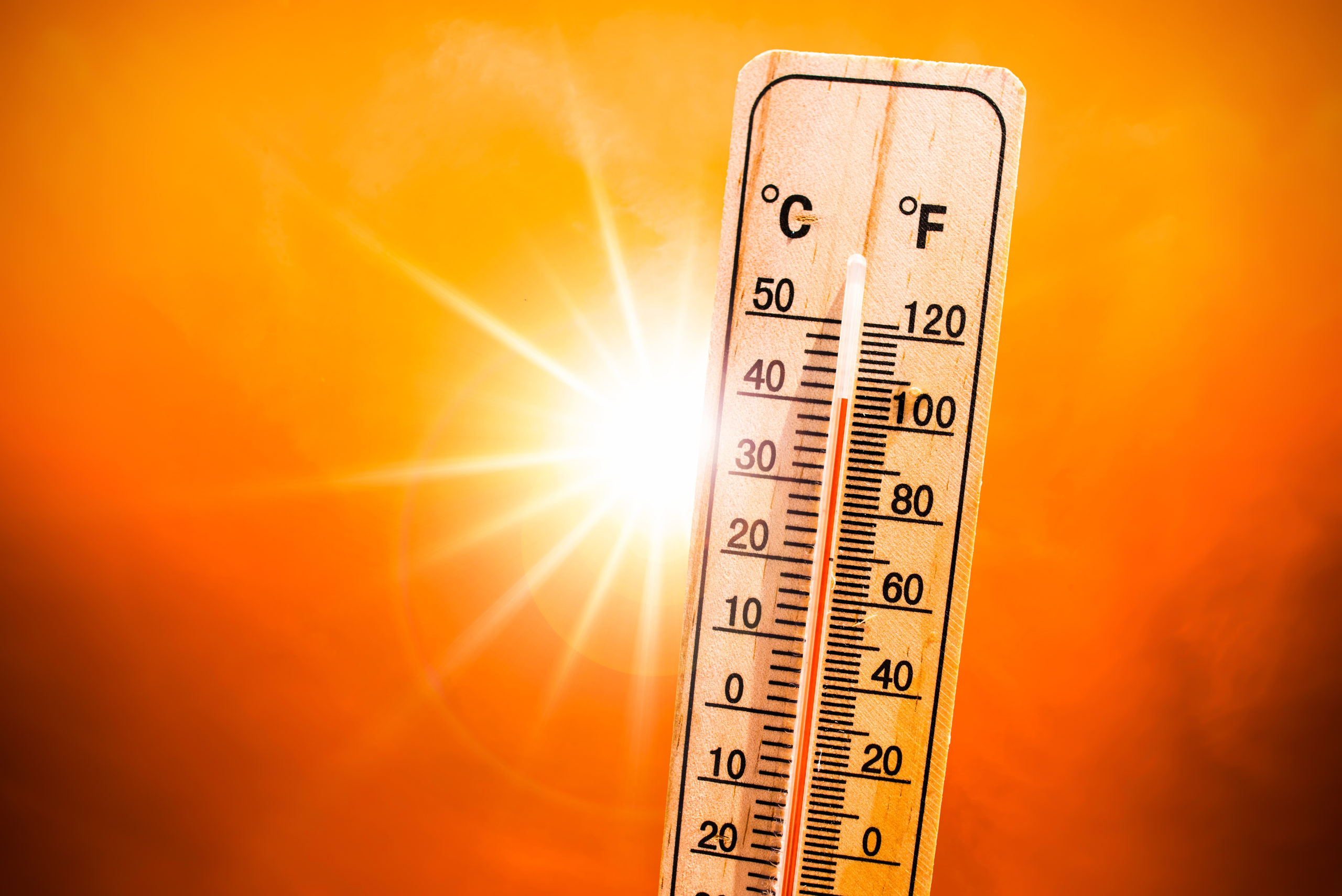 High temperatures can harm people and the environment. In the U.S., more than 67,000 people each year go to emergency rooms due to heat-related symptoms. With climate change, heat waves are expected to only become more frequent and severe.
Learning how climate change affects our communities and how we can plan for it is critical. In Norwalk, Connecticut a study is currently being conducted to track changes in the air and surface temperatures to see how it may affect the city and its residents.
Keep reading to learn more about the heat study in Norwalk, CT.
High temperatures can harm people and the environment. In the U.S., more than 67,000 people each year go to emergency rooms due to heat-related symptoms. With climate change, heat waves are expected to only become more frequent and severe.
Learning how climate change affects our communities and how we can plan for it is critical. In Norwalk, Connecticut a study is currently being conducted to track changes in the air and surface temperatures to see how it may affect the city and its residents.
Keep reading to learn more about the heat study in Norwalk, CT.
Why is Norwalk Conducting a Heat Study?
During hot periods, people in urban areas experience higher temperatures than rural areas. More asphalt, higher concentration of buildings and fewer trees make cities retain more heat. This is called the Urban Heat Island Effect.
Being from a temperate area, most Connecticut residents aren’t accustomed to extreme heat. As a result, area residents face a heightened risk for heat-related illnesses during times of extremely high temperatures. Studies suggest that climate change will intensify the conditions that lead to heat-related illnesses, symptoms that can even prove fatal.
Norwalk has also been found a vulnerable zone by the Connecticut Institute for Resilience and Climate Adaptation (CIRCA) in a recent Vulnerability Assessment. To prepare, Norwalk is partnering with CIRCA on resiliency projects. The heat study is part of that, and will look at changes in air and surface temperatures over time.
Norwalk, CT Heat Vulnerability Assessment
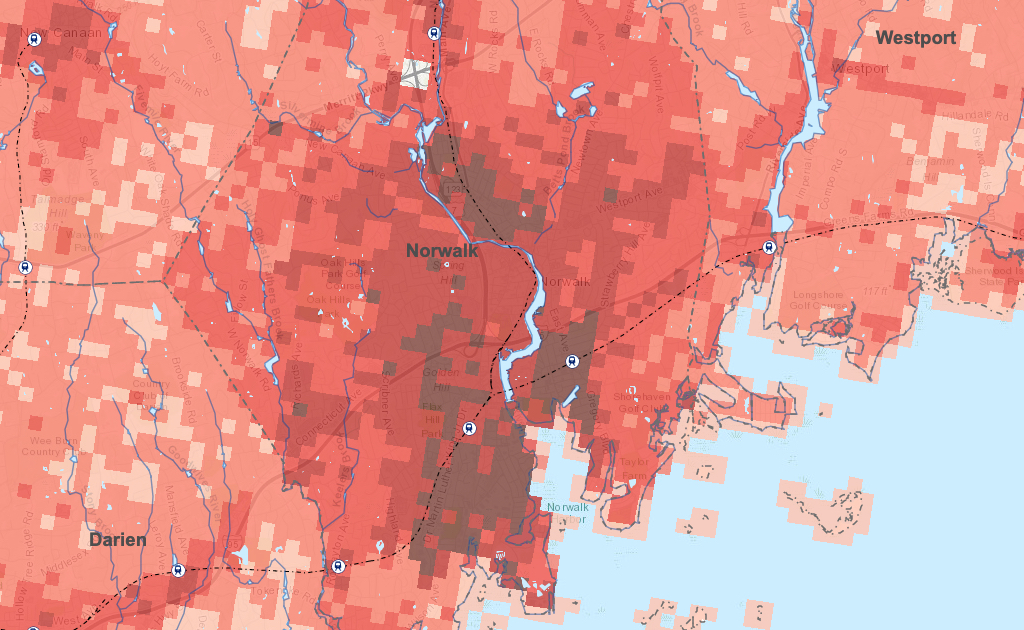
The Goals of the Heat Study
The primary goal of the heat study is to find and map various areas in Norwalk to understand the vulnerabilities of different areas to heat. This will help the city identify at-risk areas in order to develop ways to help the community prepare for higher, more extreme temperatures, like where to place cooling centers. The study will also take a look at urbanization and rising temperatures, such as understanding how certain traffic flows affect heat output in order to put in place effective solutions to combat climate change.
The data revealed by the study will also enable researchers to model inconsistencies and examine the differences between heat sensors and satellite-measured temperatures.
How the Heat Study in Norwalk, CT Will Work
To gauge temperatures in the city, heat sensors have been placed at 13 locations around Norwalk, from Long Island Sound shorelines and parks to buildings in more urban areas. The study is being conducted from June through October 2022.
The sensors are wireless, and are mounted 8-10 feet above ground on trees or poles. They will measure and monitor temperatures and relative humidity. They will also record dew point temperatures at the street level.
Learn More, Get Involved
The heat study in Norwalk will help find areas of the city that are vulnerable to extreme heat events to inform decisions related to public health and community planning in the years to come, including the development of a community-wide resilience plan. You can find more information at the CIRCA Norwalk Heat Study page. In the near term, the heat study will help to guide the Resilient South Norwalk Project launching in the summer of 2022 with CIRCA.
Missing Middle Housing and How It Benefits Cities and Towns
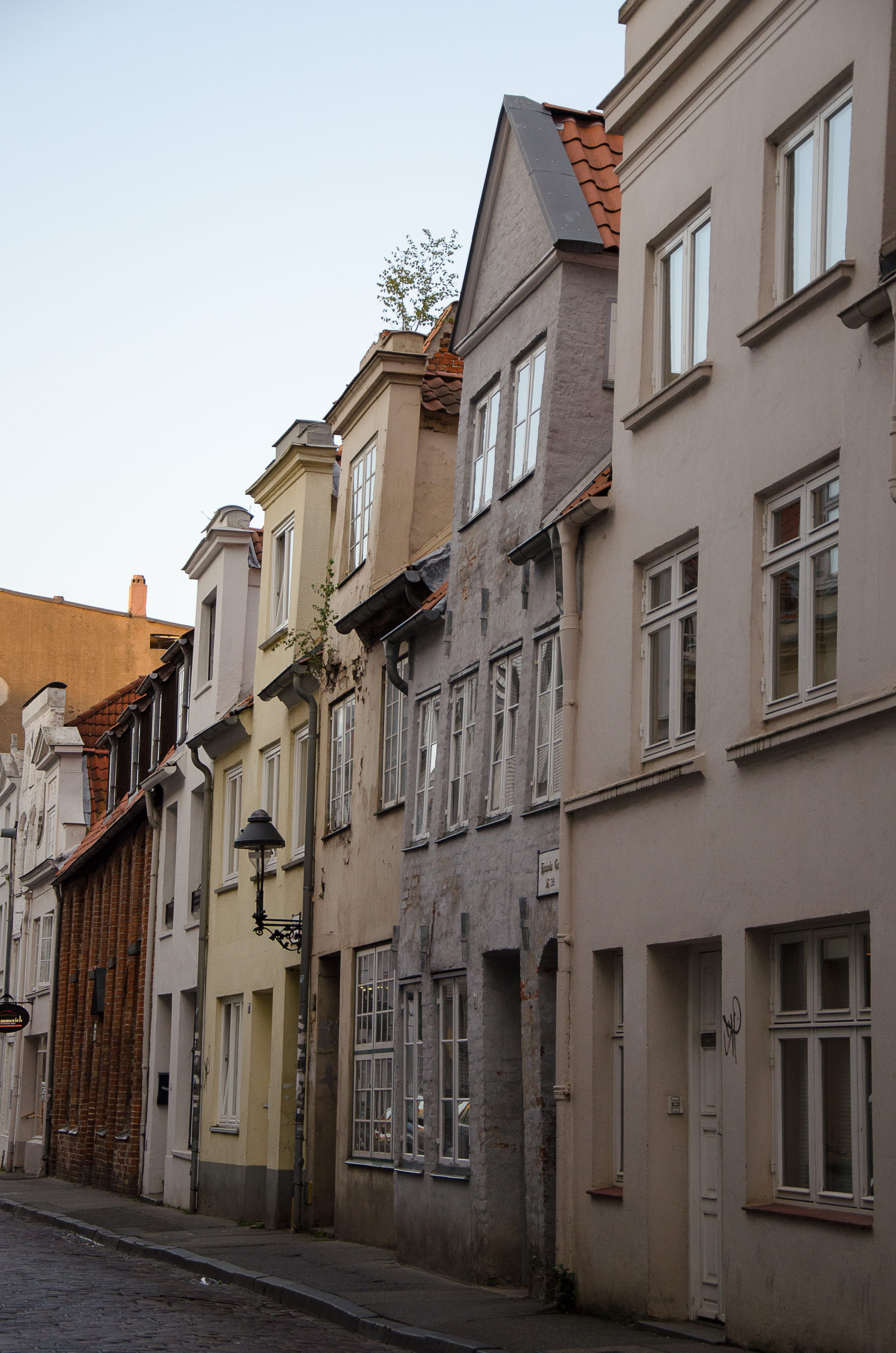 From attracting talented professionals to lowering living costs and allowing for mixed-use development, missing middle housing addresses many issues and alleviates some pressing challenges facing cities and towns today.
Overall, missing middle housing encompasses a broad range of dwelling types. In general, these are buildings with multiple units located in easily walkable neighborhoods. For many cities, these can be workable solutions to existing residential neighborhoods. Moreover, they are affordable to low- and middle-income residents, addressing the housing crisis.
Keep reading to learn more about missing middle housing and how it benefits cities and their residents.
From attracting talented professionals to lowering living costs and allowing for mixed-use development, missing middle housing addresses many issues and alleviates some pressing challenges facing cities and towns today.
Overall, missing middle housing encompasses a broad range of dwelling types. In general, these are buildings with multiple units located in easily walkable neighborhoods. For many cities, these can be workable solutions to existing residential neighborhoods. Moreover, they are affordable to low- and middle-income residents, addressing the housing crisis.
Keep reading to learn more about missing middle housing and how it benefits cities and their residents.
What Is Missing Middle Housing?
Broadly speaking, the missing middle is composed of diverse housing types that fall into the category between single family dwellings and larger apartment buildings with many units. Missing middle units are similar in scale to single-family homes, addressing space limitations. They include duplexes, multiplexes, cottage courts, and townhomes. These types of dwellings allow for urban areas that are less dense, more walkable, and offer more open spaces.
Why Is Missing Middle Housing Needed?
Currently, there is a growing gap between upcoming demographics and available housing options. If missing middle housing were built, it would offer an affordable alternative. Those who work in the city could purchase property, build equity-based wealth, and still live affordably.
In addition to greater affordability, missing middle housing also addresses housing demand. Since many aspiring homeowners are priced out of the market, they must keep renting for years. Likewise, the available options for low-priced housing tend to be farther away from urban centers with little access to public transportation. This mismatch between the demand and city-based options is substantial.
Moreover, smaller multi-unit dwellings support walkability and keep spending in the local economy. By creating housing options in urban spaces, consumers can utilize public transportation more effectively. Thus, residents would save on transportation expenses and build equity in their new homes.
Who Benefits the Most From Missing Middle Housing?
Those looking for moderate or lower-priced housing would benefit from missing middle housing.
These types of multi-unit housing use existing space more efficiently, reducing cost per square foot.
Additionally, many creative professionals are not interested in traditional living. As a result, they are willing to live with simplified or downsized amenities. For example, many are looking for a car-free lifestyle, which is impossible in the suburbs.
Empty-nesters looking to downsize after their children have left home can benefit from smaller space and reduced expenses. At the moment, these populations often do not have effective options available in cities and larger towns.
Missing middle housing options can help to ensure that low and moderate income residents of a city can find affordable housing and remain there where they are close to transportation, jobs and other benefits of urban living.
What is Norwalk Doing to Address Missing Middle Housing?
Norwalk is currently evaluating its accessory dwelling unit regulations to potentially allow more flexibility in how these units are developed. In addition, as part of the comprehensive rewrite of the zoning regulations, the City is considering freeing up certain portions of the smaller-lot, single-family zones, to allow for 2-family dwellings. Norwalk's Economic Outlook in 2022 and Beyond
 Throughout 2020 and 2021, the Connecticut Board of Labor reported high numbers of unemployment claims and other worrying statistics about the state's overall economic situation. However, a recent economic look at Norwalk, CT shows promise of growth and stability.
Throughout 2020 and 2021, the Connecticut Board of Labor reported high numbers of unemployment claims and other worrying statistics about the state's overall economic situation. However, a recent economic look at Norwalk, CT shows promise of growth and stability.
This Norwalk economic outlook was presented to the Norwalk Common Council earlier this year. Here's what Norwalk residents and business owners need to know about housing, new businesses, commercial real estate, and urban development in 2022.
Residential Housing
In January of 2022, the median listed home price in Norwalk, Connecticut was $550,000, a 10% increase from the previous year.
As of late February and early March of this year, the average single-family home sold for $750,000 and spent about 86 days on the market.
These price changes signal a robust residential housing market. According to the report, home vacancy rates are at an all-time low in Norwalk, CT. This could drive increased housing development in the form of single-family homes, apartments, and multi-family residences for people of every economic background.
New Businesses
To give an accurate assessment of new business growth in Norwalk, government officials focused their attention on two statistics.
First, they looked at the number of new business formations since July 2021. In that period, there have been 185 new businesses established. The committee projects that by June 2022, that number will reach 370.
Next, the city reviewed how many commercial tenant fit-up permits they've granted since the beginning of the fiscal year. There have already been 71, so they anticipate granting a total of 140 by the end of the fiscal year.
2020 only saw 101 commercial tenant fit-up permits granted to businesses while 2021 saw 131. With these promising statistics, it appears as if business development in Norwalk is seeing a rebound from the hardships of the Covid-19 pandemic.
Commercial Real Estate
To get a bigger picture of the Bridgeport-Stamford-Norwalk commercial real estate market, the commercial leasing activity in the area was compared to national averages. Overall, the state of commercial real estate appears to be weaker than national averages, especially in the retail property sector.
However, the following property sectors in Norwalk are stronger than the national averages:
- Apartments
- Offices
- Industrial
- Hotel/lodging
Insecurities about economic recovery in Norwalk were attributed to the rise of the Omicron variant earlier this year.
Class A office availability has increased to 38.3%. This increase in available office space is possibly due to changing attitudes about office workers working from home and sublease supply. The city continues to watch these trends closely.
Urban Development
Despite some weakness in the commercial real estate market, the City of Norwalk anticipates five new urban development projects that may see groundbreaking or applications in 2022:
What This Economic Outlook Means for Norwalk's Future
In general, Norwalk city officials see this economic outlook report as promising. In both residential and commercial sectors, developers are laying building blocks for increased growth in the future. The City of Norwalk will continue to work with developers and seek input from residents and businesses.
Combined with reviews and updates to Norwalk’s
industrial zones,
industrial waterfront land uses,
zoning regulations and affordable housing plans, the City of Norwalk has high hopes for 2022's economic situation.
Stay tuned with the City of Norwalk. Give your ideas and feedback for the future plans for business development in Norwalk by
subscribing to updates, and make your voice heard.
Norwalk, CT Merges Separate Planning & Zoning Commissions
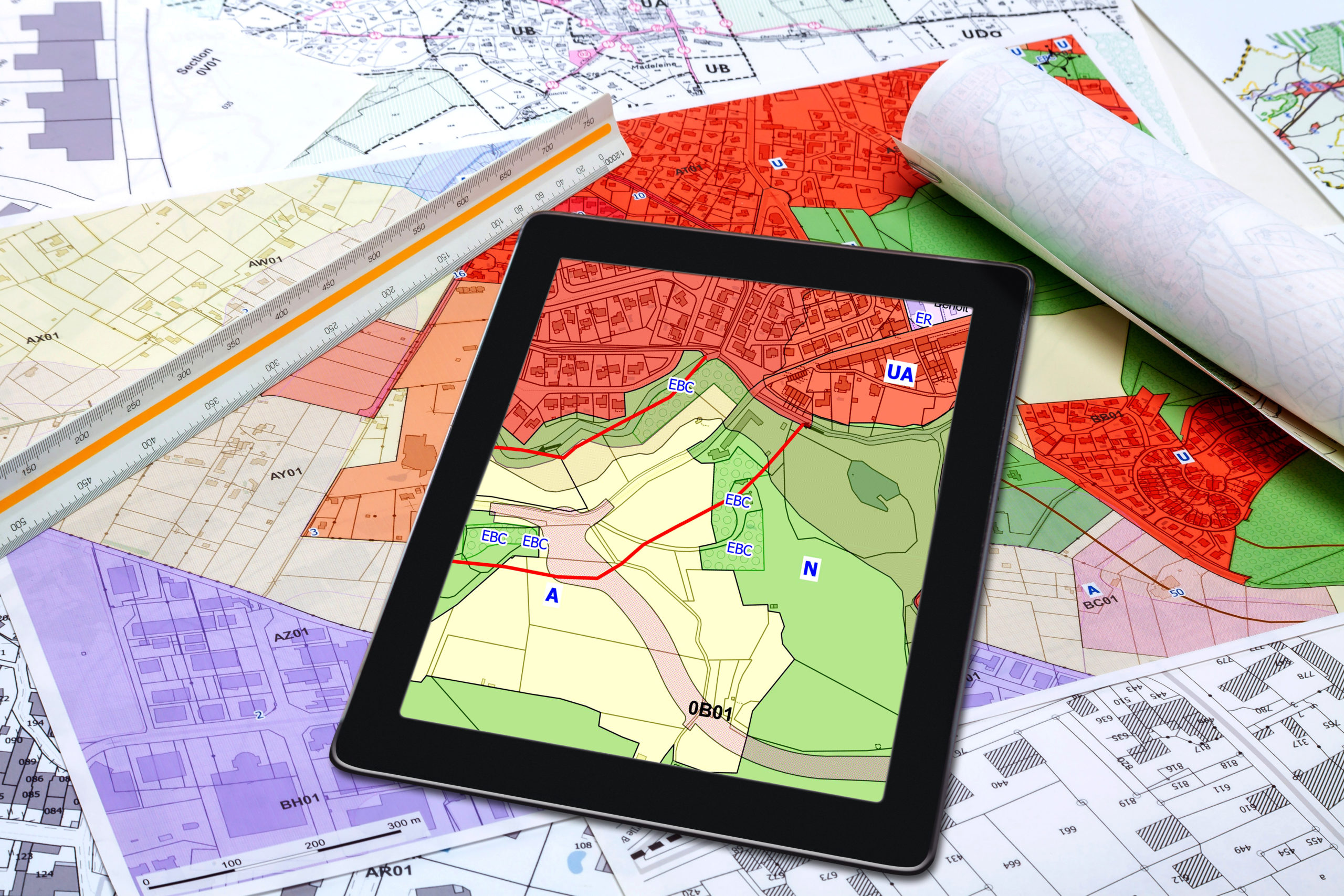 The City of Norwalk is making improvements for the future by merging the city’s separate Zoning and Planning Commissions. It’s an opportunity to streamline decision making and provide better coordination between long-term planning and the codes enacted to realize the vision of the plans.
Keep reading to learn more about the merging of Norwalk’s Planning & Zoning Commission.
The City of Norwalk is making improvements for the future by merging the city’s separate Zoning and Planning Commissions. It’s an opportunity to streamline decision making and provide better coordination between long-term planning and the codes enacted to realize the vision of the plans.
Keep reading to learn more about the merging of Norwalk’s Planning & Zoning Commission.
Recent CT State Land Use Planning Changes
A lot happened during the last year related to Land Use Planning in the State of CT. The Connecticut General Assembly presented more critical land use and statewide zoning proposals than they have in decades.
The bills that obtained approval from the House, Senate, and Governor’s office were scaled-back versions of these proposals. Still, they received much media attention, and for a good reason. They were important rulings that will affect our city.
Why the Change in Norwalk?
Some Connecticut towns have already combined their Planning and Zoning commissions. The new structure of Norwalk’s Planning & Zoning Commission supports an efficient and collaborative working relationship.
For instance, New Haven’s Planning commission has also combined the duties and responsibilities of P&Z. However, areas like Danbury and Stamford continue to run separate city Planning and Zoning commissions.
For some time, the City of Norwalk had also run separate Planning and Zoning commissions. The general agreement was that the separation resulted in a disconnect between planning, land use policy, and city zoning and created additional work for applicants to both commissions.
Benefits of the Planning & Zoning Commission Merger
Historically, a third or more of the Planning Commission’s workflow came from the Zoning Commission. This process often added one to two months to the approval process, hindering development in the city. Now, applicants will save considerable time and costs without the need to present requests to both commissions.
The union of the planning and zoning commissions also creates a more consistent planning relationship. It gives the Commission increased jurisdiction. That broadened authority enables them to support consistency with citywide planning.
What to Expect from Norwalk’s Unified P&Z Commission
In the past, the Planning Commission and Zoning Commission successfully executed their distinct functions. Together, P&Z can coordinate to promote greater efficiency and growth for the Norwalk economy. New members of the merged P&Z group have been selected.
Currently, the City is rewriting its zoning regulations, which is set to be completed later this year.. Other land use efforts underway in Norwalk, CT are a reassessment of its industrial zones and developing a plan for its urban waterfront areas.
You can stay updated on Norwalk Planning and Zoning Department news by visiting the official website.
The City of Norwalk welcomes your questions and feedback. Please feel free to contact us with your inquiries.Norwalk Residents Weigh In On Industrial Waterfront Uses
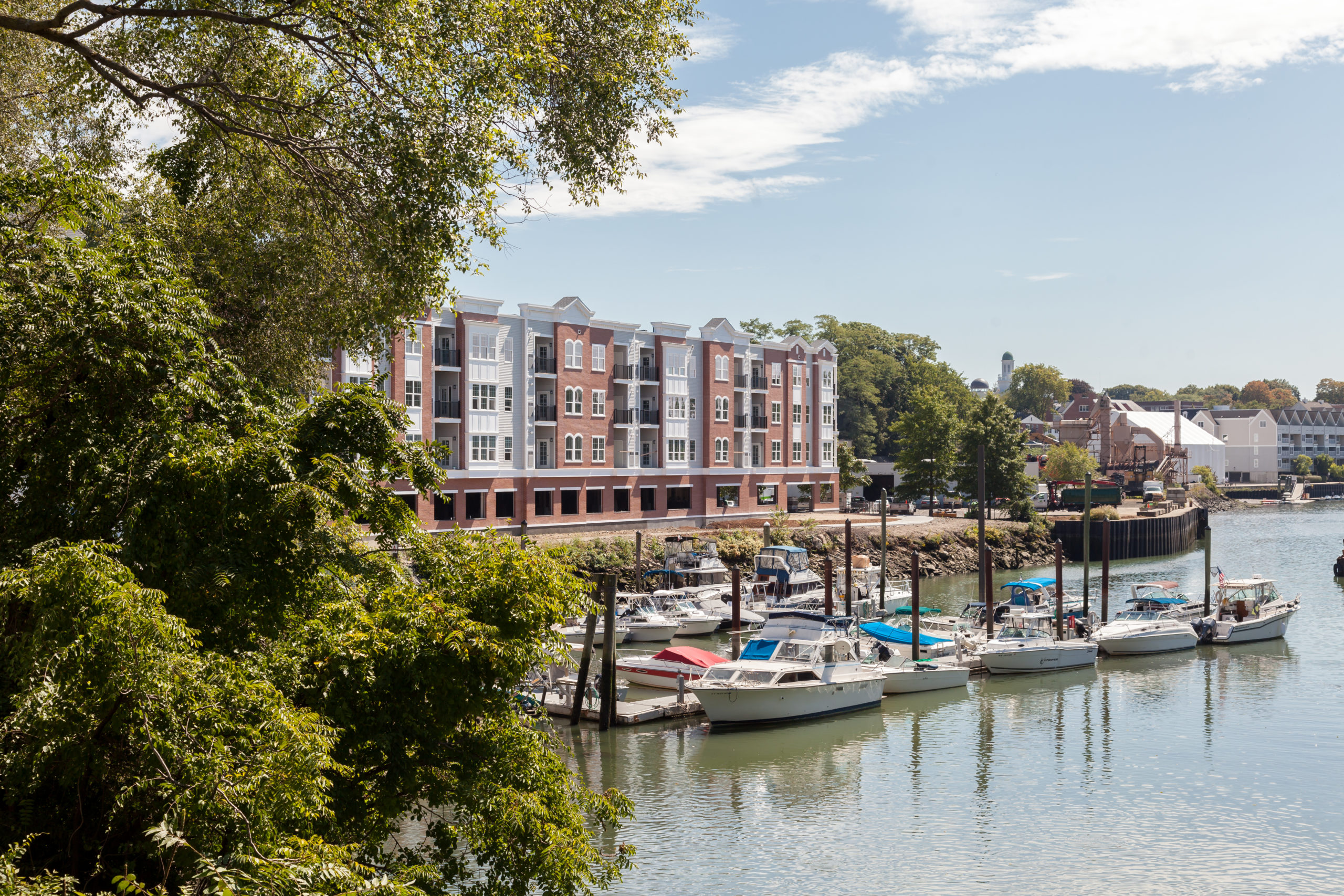 As the City of Norwalk studies how to optimize the industrial areas of its waterfront resources along the mid-to-upper Norwalk Harbor, the Planning and Zoning office is reaching out to the public and other stakeholders for their thoughts.
As the City of Norwalk studies how to optimize the industrial areas of its waterfront resources along the mid-to-upper Norwalk Harbor, the Planning and Zoning office is reaching out to the public and other stakeholders for their thoughts.
One of the ways planners have gathered input is via an online community mapping activity. This digital engagement, which started in late 2021, was the first of several opportunities to gather public comment. Participants added their input on how they would like to see the waterfront used via an interactive map where they placed comments pinpointing to specific areas in the study zone.
Keep reading to find out what the public would like to see along the industrial area of Norwalk’s waterfront.
Interactive Waterfront Survey Findings
In all, more than 150 comments were made by more than 55 stakeholders, with 1,100 people visiting the site.
A large majority of comments involved a desire to include public access and open space along Norwalk’s waterfront. Another popular comment was regarding infrastructure along waterfront areas such as the inclusion of sidewalks, paths and trails.
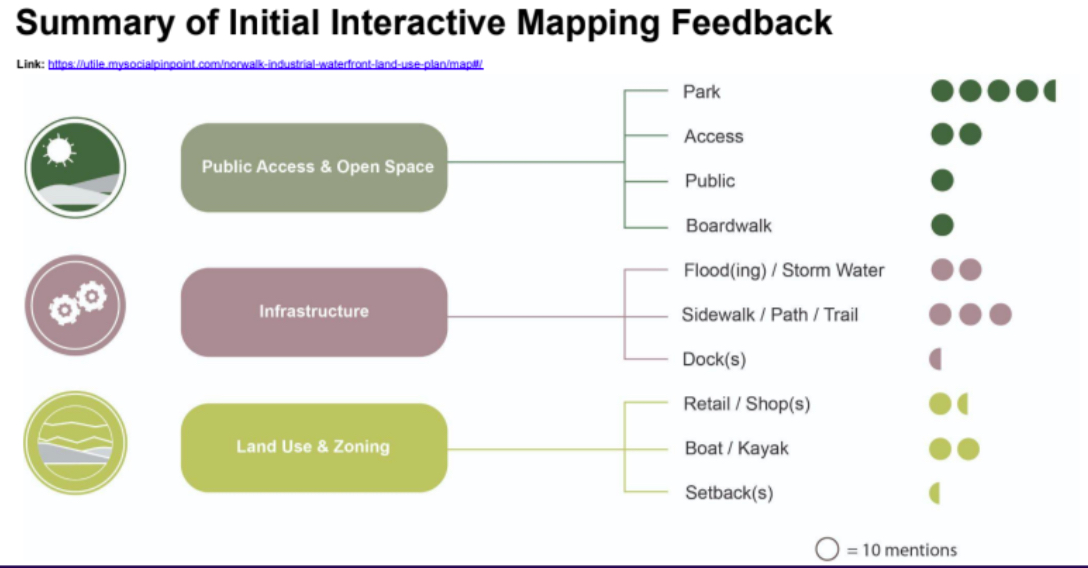 Below are some of the most popular comments for various areas along the Norwalk River.
Below are some of the most popular comments for various areas along the Norwalk River.
Broader Marina District
The comments pinpointed to Veteran’s Park asked for improvements to the park and increased water access, the input being that the water frontage is substantially underutilized.
Some ideas included putting in better boardwalk/paved paths around the park, adding plantings, picnic tables and access for kayaks and canoes.
Along Water Street many respondents said they want to maintain the land for water-dependent uses, such as boatyards and aquaculture.
Many liked the suggestion that anything vacant in this area should be required to be landscaped into parks accessible to the public since this area is flood-prone.
East Bank of the Norwalk River
Input on the waterfront area on the River’s east side industrial-mixed use transition area included a desire by many to finish the Norwalk Harbor Loop Trail of which there is a missing section in this area.
Commenters also wanted to see cleanup of the old asphalt plant in East Norwalk, possibly turning the area into a park that could serve as a buffer zone to accommodate flooding that occurs in the area regularly.
Industrial/Commercial Business District Wall Street Area
Further up the river in the Wall Street area, many liked the idea of making the waterfront here more accessible to pedestrians, and increasing recreational marine uses such as canoe or kayak rentals.
Other comments included zoning the area for accessory uses that would enable cafes and restaurants. Respondents also expressed a desire to connect the area under the bridge leading to Freese Park with the Harbor Trail Loop.
Washington Street/Oyster Shell Park District
On the west side of the Norwalk River, a number of those surveyed would like to see the completion of pedestrian access from South Norwalk (SoNo) through Oyster Shell Park, making both pedestrian and bicycle access safer.
Others expressed an interest in a continuous boardwalk in SoNo on the waterfront from Washington Street to Elizabeth or Hanford Streets, including in front of the Maritime Aquarium.
Public Engagement for Industrial Waterfront Land Use Study
The Waterfront Land Use Study Steering Committee will continue to engage and inform the public with a series of public meetings.
Overall themes that came out of this original survey will be discussed and participants will be asked to rank the top three issues/concerns/themes that they would like this plan to address.
The committee will also make additional suggestions for land use and development intensity that the public can weigh in on.
 Families come in a variety of shapes and sizes. More younger family members are living at home for longer. Older family members are also beginning to move in with younger members to be taken care of or to help with childcare. Regardless of what your family looks like, it's important to have space for them in your home. Accessory dwelling units (ADU) are one way to add space to a single-family home. When considering adding on an ADU or rental property, there are a lot of things to think about. What exactly are ADUs, what benefits will it have on your home, and what are the laws about them in Connecticut?
Families come in a variety of shapes and sizes. More younger family members are living at home for longer. Older family members are also beginning to move in with younger members to be taken care of or to help with childcare. Regardless of what your family looks like, it's important to have space for them in your home. Accessory dwelling units (ADU) are one way to add space to a single-family home. When considering adding on an ADU or rental property, there are a lot of things to think about. What exactly are ADUs, what benefits will it have on your home, and what are the laws about them in Connecticut?
 If you have a single-family home, it can be hard to house extra family members or children who need to live at home longer but want their own space. One of the biggest benefits to owning an ADU is that you create space for family members who need it.
Depending on the location of the dwelling, you can also rent it out to make extra income. ADUs can increase the value of your property by 20%-30%. It can also appeal to more buyers when you go to sell your home.
These dwellings can also help reduce gentrification and desegregate neighborhoods by giving opportunities to people who otherwise might not be able to afford to live in certain neighborhoods.
If you have a single-family home, it can be hard to house extra family members or children who need to live at home longer but want their own space. One of the biggest benefits to owning an ADU is that you create space for family members who need it.
Depending on the location of the dwelling, you can also rent it out to make extra income. ADUs can increase the value of your property by 20%-30%. It can also appeal to more buyers when you go to sell your home.
These dwellings can also help reduce gentrification and desegregate neighborhoods by giving opportunities to people who otherwise might not be able to afford to live in certain neighborhoods.


 Photo courtesy of Nancy Chapman[/caption]
Photo courtesy of Nancy Chapman[/caption]

 A significant portion of the waterfront in Norwalk, CT has been zoned and used for industrial use. The city undertook a planning exercise to determine the appropriate land uses for these historically industrial waterfronts. The draft plan, Industrial Waterfront Land Use Plan, has been developed for the city to use as a policy roadmap, allowing these areas to grow and change in a way that balances and aligns with both public and private needs.
A significant portion of the waterfront in Norwalk, CT has been zoned and used for industrial use. The city undertook a planning exercise to determine the appropriate land uses for these historically industrial waterfronts. The draft plan, Industrial Waterfront Land Use Plan, has been developed for the city to use as a policy roadmap, allowing these areas to grow and change in a way that balances and aligns with both public and private needs. 
 Over the past few decades, South Norwalk has developed into one of the
Over the past few decades, South Norwalk has developed into one of the  High temperatures can harm people and the environment. In the U.S., more than
High temperatures can harm people and the environment. In the U.S., more than 
 From attracting talented professionals to lowering living costs and allowing for
From attracting talented professionals to lowering living costs and allowing for  Throughout 2020 and 2021, the Connecticut Board of Labor reported
Throughout 2020 and 2021, the Connecticut Board of Labor reported  The City of Norwalk is making improvements for the future by merging the city’s separate Zoning and Planning Commissions. It’s an opportunity to streamline decision making and provide better coordination between long-term planning and the codes enacted to realize the vision of the plans.
The City of Norwalk is making improvements for the future by merging the city’s separate Zoning and Planning Commissions. It’s an opportunity to streamline decision making and provide better coordination between long-term planning and the codes enacted to realize the vision of the plans.  As the City of Norwalk studies how to optimize the industrial areas of its waterfront resources along the mid-to-upper Norwalk Harbor, the Planning and Zoning office is reaching out to the public and other stakeholders for their thoughts.
As the City of Norwalk studies how to optimize the industrial areas of its waterfront resources along the mid-to-upper Norwalk Harbor, the Planning and Zoning office is reaching out to the public and other stakeholders for their thoughts. 


